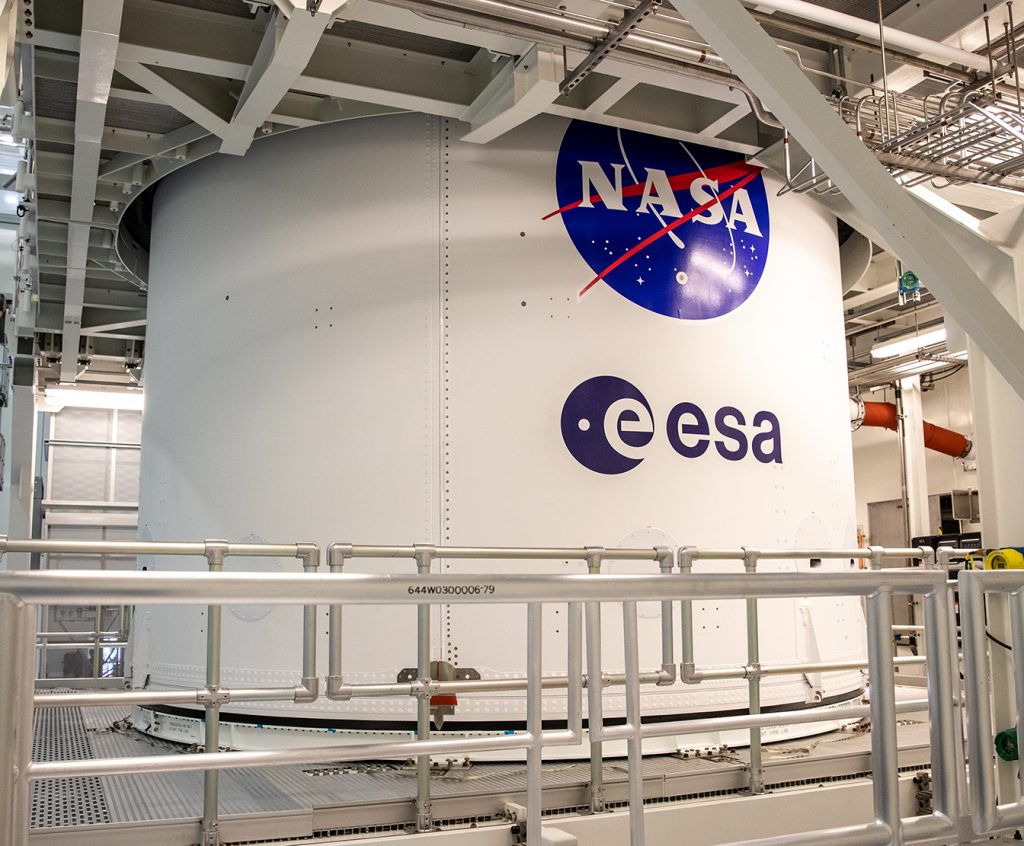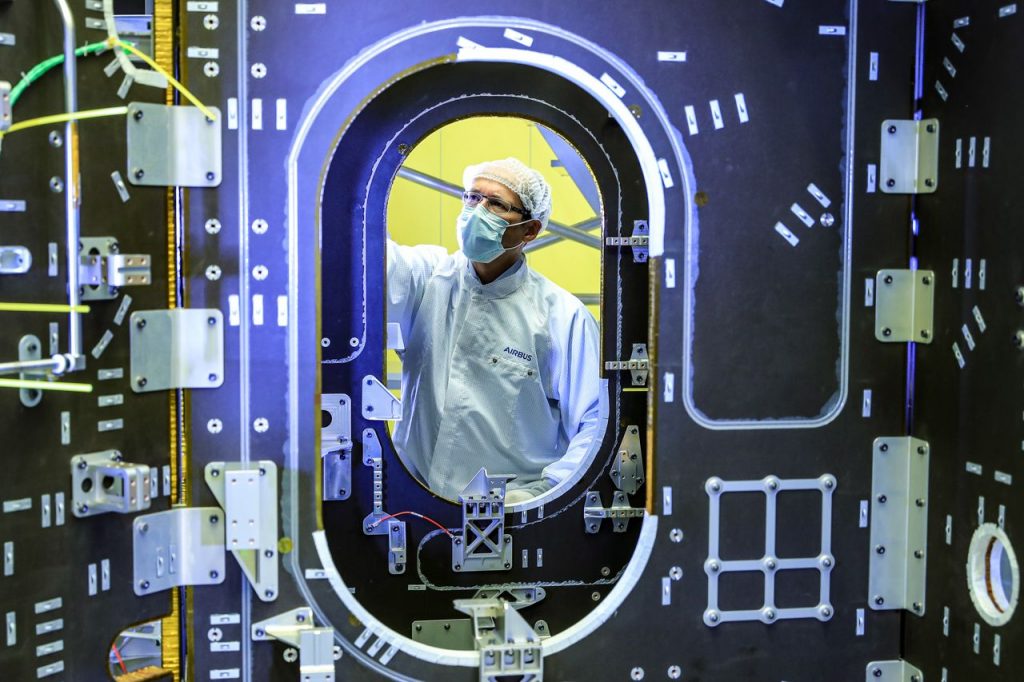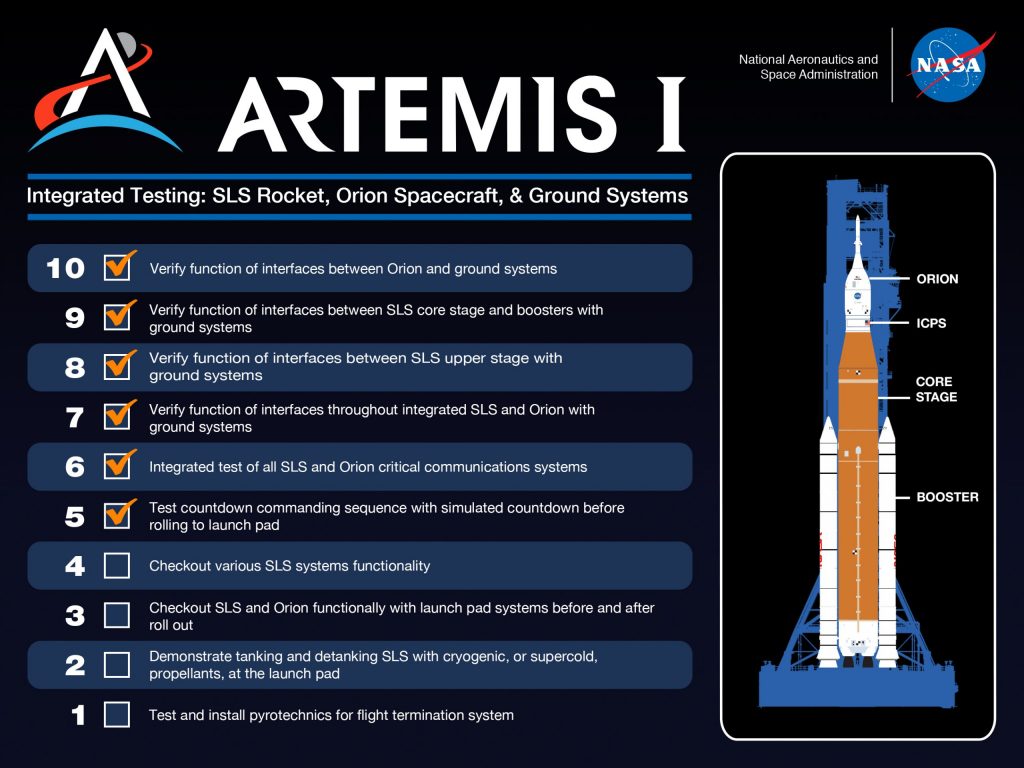It’s the first month of 2022 and time to look at the milestones for the European Service Modules last year as well as look at what’s in store for this year.
A look at 2021
For the first Artemis mission, 2021 saw the European Service Module and Crew Module packed neatly together in their protective fairings, the European Service Module’s tanks were fuelled up and then the complete spacecraft was moved to the Launch Abort System Facility at NASA’s Kennedy Space Center in Florida, USA. There the Launch Abort System was placed on top, and the stack was branded with the logos of the space agencies’ building Orion.

Meanwhile the SLS rocket engines were test-fired on 18 March 2021. The hot-firing powered up the largest rocket element NASA has ever built for 8 minutes and 19 seconds, setting all thrust to maximum like on launch day but without leaving Earth. The SLS core stage was then shipped to Kennedy Space Center.
The Orion spacecraft, Launch Abort System and rocket fairing were hoisted to the top of the incredibly tall Vertical Assembly Building and stacked on top of the Interim Cryogenic Propulsion Stage that will boost Orion from Earth orbit to the Moon. The Space Launch Systems rocket was already waiting for Orion, making the complete assembly ready for flight.
October also saw the completion in Bremen, Germany, and shipment to NASA Kennedy of the second European Service Module. In 2021 the fuel tanks were installed and the main engine. As the Artemis I launch nears, the second Artemis mission is getting ready too.
The second European Service Module arrived by Antonov aircraft and was promptly unpacked and integrated with the Crew Module Adapter at the Operations and Checkout building at NASA’s Kennedy Space Center. It will continue its path towards the Launchpad with hardware being installed, passing tests and checks along the way.
For Artemis III, the structure was delivered by Thales Alenia Space to the Airbus integration hall in Bremen, Germany. The technicians there have started the integration phase of building the spacecraft that will bring humans to land on the Moon starting with laying kms of electric cables, the groundwork for sharing information and sending commands in the advanced spacecraft.

What’s to come in 2022
The obvious highlight for this year is the launch of the first Artemis mission. Teams are working hard for a roll-out to the launch pad in mid-February for a wet dress rehearsal test. The wet dress rehearsal will see the SLS rocket loaded with propellant, and the team on the ground will run through all the pre-launch operations to prepare for the Artemis I launch.

The second European Service Module will be completing integration at the Operations and Checkout building with the formal transfer of ownership to NASA at the end of the year.
While the third European Service Module continues to be built up in Bremen, the fourth Service Module structure is expected to arrive in the Summer. This module will be part of the Artemis IV mission and will see Orion push the I-Hab crew module to the lunar Gateway.
ESA’s regular Ministerial Council will be held in November of this year where the delegates from the Member States will discuss and decide on the future of the next round of European Service Modules: seven, eight and nine.

 Automated Transfer Vehicle page
Automated Transfer Vehicle page ATV blog archive
ATV blog archive
 NASA Orion page
NASA Orion page NASA Artemis
NASA Artemis Airbus Orion page
Airbus Orion page
Discussion: no comments